Tuesday, October 6, 2020 – WONDERFUL DETAILS THAT WE OFTEN OVERLOOK AT ROCKEFELLER CENTER


TUESDAY, OCTOBER 6, 2020
The
175th Edition
From Our Archives
THE ART
OF
LEE LAWRIE
IN
ROCKEFELLER CENTER
LEE LAWRIE
WIKIPEDIA
Lee Oscar Lawrie
(October 16, 1877 – January 23, 1963
Was one of the United States’ foremost architectural sculptors and a key figure in the American art scene preceding World War II. Over his long career of more than 300 commissions Lawrie’s style evolved through Modern Gothic, to Beaux-Arts, Classicism, and, finally, into Moderne or Art Deco.
He created a frieze on the Nebraska State Capitol building in Lincoln, Nebraska, including a portrayal of the announcement of the Emancipation Proclamation. He also created some of the architectural sculpture and his most prominent work, the free-standing bronze Atlas (installed 1937) at New York City’s Rockefeller Center.
Lawrie’s work is associated with some of the United States’ most noted buildings of the first half of the twentieth century. His stylistic approach evolved with building styles that ranged from Beaux-Arts to neo-Gothic to Art Deco. Many of his architectural sculptures were completed for buildings by Bertram Goodhue of Cram & Goodhue, including the chapel at West Point; the National Academy of Sciences in Washington, D.C.; the Nebraska State Capitol; the Los Angeles Public Library; St. Bartholomew’s Episcopal Church in New York; Cornell Law School in Ithaca, New York; and Rockefeller Chapel at the University of Chicago. He completed numerous pieces in Washington, D.C., including the bronze doors of the John Adams Building of the Library of Congress, the Basilica of the National Shrine of the Immaculate Conception south entrance portal, and the interior sculpture of George Washington at the National Cathedral.
Lawrie produced important and highly visible work under Raymond Hood at Rockefeller Center in New York City, which included the Atlas in collaboration with Rene Paul Chambellan. By November 1931 Hood said, “There has been entirely too much talk about the collaboration of architect, painter and sculptor.” He relegated Lawrie to the role of a decorator.
ROCKEFELLER CENTER
Lawrie produced important and highly visible work under Raymond Hood at Rockefeller Center in New York City, which included the Atlas in collaboration with Rene Paul Chambellan. By November 1931 Hood said, “There has been entirely too much talk about the collaboration of architect, painter and sculptor.” He relegated Lawrie to the role of a decorator.[9]
Lawrie’s most noted work is not architectural: it is the freestanding statue of Atlas, on Fifth Avenue at Rockefeller Center, standing a total 45 feet tall, with a 15-foot human figure supporting an armillary sphere.[10] At its unveiling, some critics were reminded of Benito Mussolini, while James Montgomery Flagg suggested that it looked as Mussolini thought he looked.[11] The international character of Streamline Moderne, embraced by Fascism as well as corporate democracy, lost favor during the Second World War.
Featured above the entrance to 30 Rockefeller Plaza and axially behind the golden Prometheus, Lawrie’s Wisdom is one of the most visible works of art in the complex. An Art Deco piece, it echoes the statements of power shown in Atlas and Paul Manship’s Prometheus.

PROGRESS
LEE LAURIE
A true icon of the Art Deco style, this bas-relief is allegorical, has bold and flat geometric shapes, strong colors and stylized forms, and, above all, is decorative. The main character is Columbia, the traditional female symbol of America. Here, she is a large athletic figure wearing a simple peasant dress, her face composed and devoid of emotion. She holds the flame of divine fire in one hand, an olive branch, the symbol of peace, in another. The mythological horse Pegasus, the symbol of inspiration, is placed behind her, while an eagle in the foreground symbolizes power. Above 49th Street entrance.
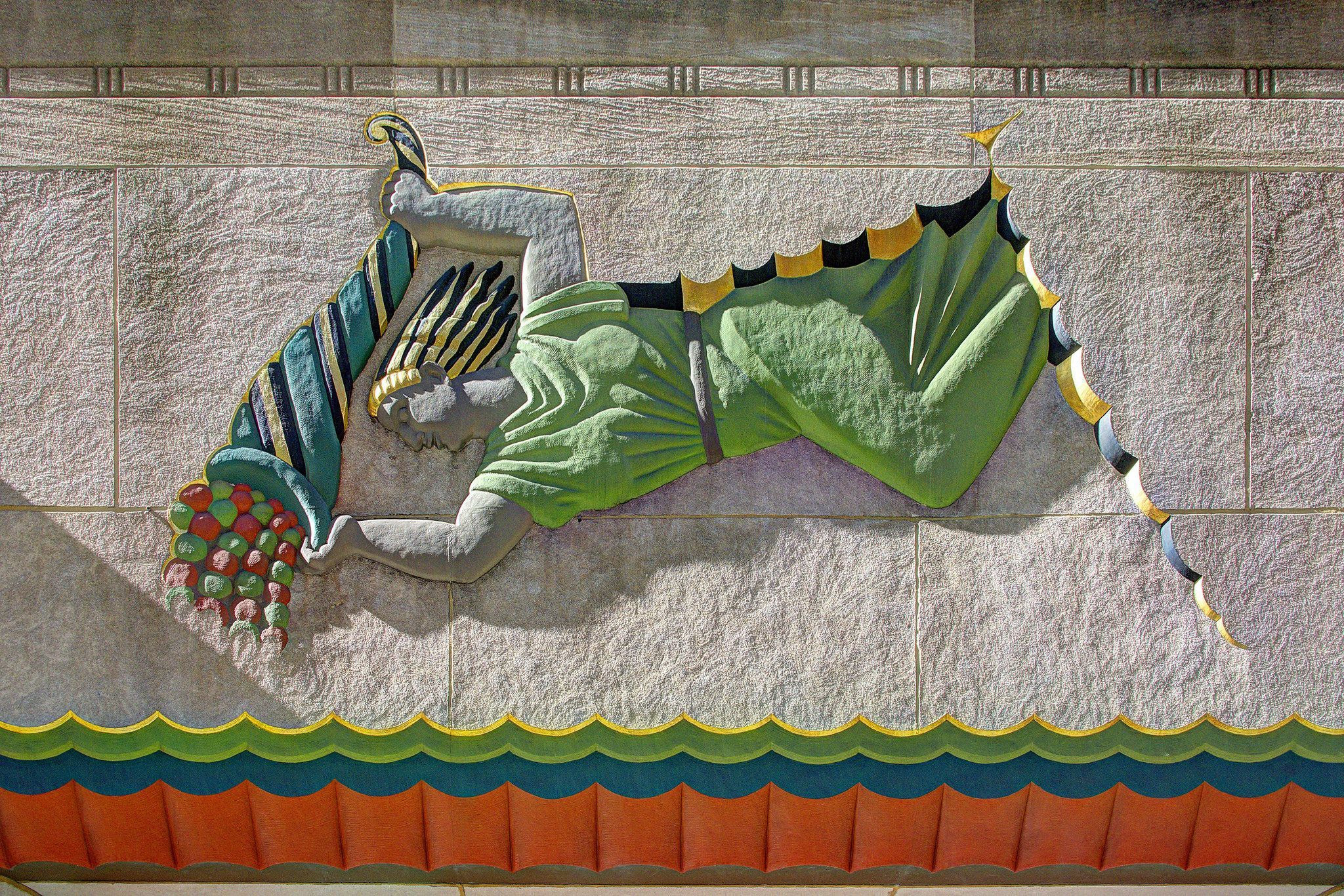
CORNUCOPIA OF PLENTY
This polychrome-painted stone carving depicts a messenger soaring from the clouds, emptying an overflowing horn onto the earth. Lee Lawrie wrote that it symbolizes “the plentitude that would result from well-organized international trade”, a theme compatible to the activities of the building. The figure’s downward angle, her flowing golden hair and the dramatic spilling of contents from her cornucopia all skillfully convey a feeling of motion and energy.
10 West 51st Street
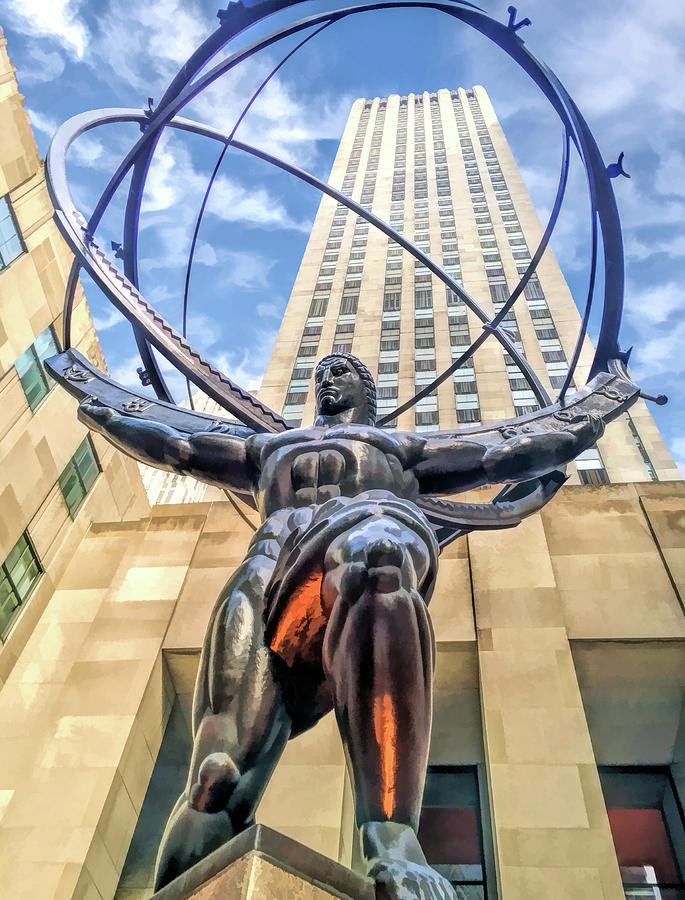
ATLAS
Atlas is a successful collaboration between two talented artists, Lee Lawrie, who conceived the idea and designed the figure, and Rene Chambellan, who modeled the heroic-sized statue from his sketch. A famous figure from Greek mythology, Atlas was a half-man, half-god giant known as a Titan, who helped lead a war against the Olympic gods. After the Titans’ defeat, Atlas was condemned to carry the world on his shoulders as punishment. Atlas is one of Rockefeller Center’s greatest Art Deco icons and has even been used on U.S. postage stamps.
630 Fifth Avenue, main entrance forecourt
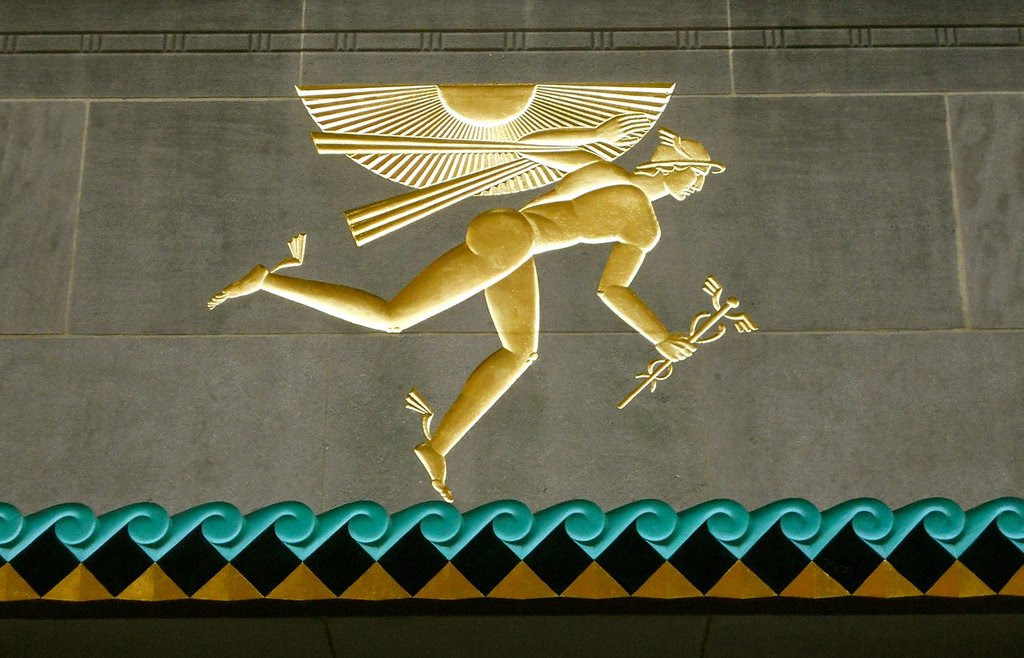
WINGED MERCURY
The Roman god Mercury has been used to symbolize Britain’s worldwide strength in the 1930s, and here the gilded figure is depicted on a mission, rapidly flying over blue-green waves. His helmet signifies power and protection, while the small wings on his heels symbolize swiftness. This panel stands for the wealth and vitality of the British merchant fleets that built the empire and sailed the seas. The intaglio relief, meaning carved or engraved into the stone without any areas being higher than the surrounding stone, is a classic Art Deco architectural embellishment.

Above Channel Gardens Entrance of 620 Fifth Avenue
ARMS OF ENGLAND
Three gilded passant-gardant lions (passant means walking; gardant means looking out of the shield) reinforce the presence of the building’s primary tenant, the British monarchy. Lions were first used to decorate the shield of Richard I, who became King of England at age thirty-two and ruled from 1189 – 1199. He had spent most of his lifer in France, his mother’s country, where he received the nickname Coeur de Lion (“lionhearted”), signifying his military prowess. Gilded Tudor roses, carved below the lions, are also important symbols of royalty in Britain.
Above 50th Street entrance of 620 Fifth Avenue
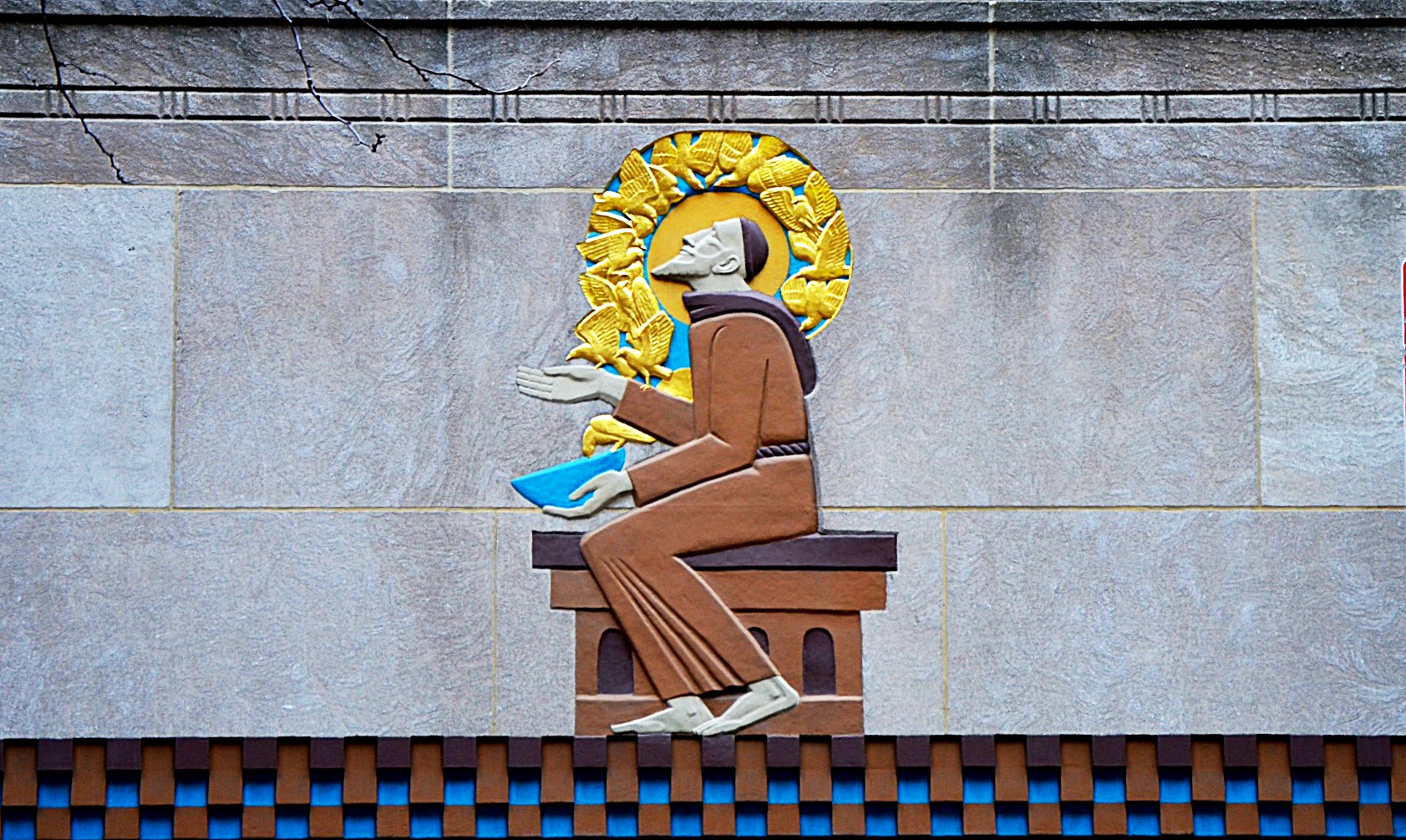
SAINT FRANCIS OF ASSISI WITH BIRDS
The figure of Saint Francis symbolizes love of self and neighbor. In 1212, he founded the Order of Friars Minor (Franciscans), who rejected materialism and, in those days, lived in the streets. In this carving, he wears an austere brown friar’s robe and bare feet. Behind his head is the halo of sainthood with flying gilded doves, the sign of the Holy Spirit. He shares his meager meal with a bird while gazing upward, seemingly thankful. Above 9 West 50th Street entrance of 630 Fifth Avenue

An Art Deco icon, Wisdom famously looms over the entrance to the main building of Rockefeller Center and can be seen from Fifth Avenue. Created by Lee Lawrie, one of America’s foremost architectural sculptors, it is an impressive and imposing focal point. Wisdom is considered the creative power of the universe, and the figure’s commanding slant, intimidating expression and biblical quote help convey his strength, impact and control over man. It is flanked by two other important works by Lawrie: Sound and Light.
Above the main entrance to 30 Rockefeller Plaza

“Story of Mankind” Clock, Bas Relief Sculpture by Lee Lawrie. Art Deco Clock Located At The Entrance of 30 Rockefeller Plaza Manhattan NYC. Built in 1930-1939.
TUESDAY PHOTO OF THE DAY
SEND OUR SUBMISSION TO ROOSEVELTISLANDHISTORY@GMAIL.COM
WIN A KIOSK TRINKET
WINNER/WINNERS WILL BE ANNOUNCED LATER THIS WEEK)

MONDAY PHOTO OF THE DAY
Astoria Pool near RFK Triboro Bridge
Opened for the Olympic Trials in 1936
(WINNER/ WINNERS WILL BE ANNOUNCED LATER THIS WEEK)

CLARIFICATION
WE ARE HAPPY TO GIVE WINNERS OF OUR DAILY PHOTO IDENTIFICATION A TRINKET FROM THE VISITOR CENTER.
ONLY THE PERSON IDENTIFYING THE PHOTO FIRST WILL GET A PRIZE.
WE HAVE A SPECIAL GROUP OF ITEMS TO CHOOSE FROM. WE CANNOT GIVE AWAY ALL OUR ITEMS,. PLEASE UNDERSTAND THAT IN THESE DIFFICULT TIMES,
WE MUST LIMIT GIVE-AWAYS. THANK YOU
BOOK SALE ON QUEENS BOOKS
THESE QUEENS BOOKS ARE ON SALE $18- EACH
KIOSK IS OPEN WEEKENDS 12 NOON TO 5 P.M.
ONLINE ORDERS BY CHARGE CARD AT
ROOSEVELTISLANDHISTORY@GMAIL.COM
EDITORIAL
For years I had jobs that were in the neighborhood of Rockefeller Center. There is something about working in a “city” where your can walk underground from 52nd Street to 47th Street. I always liked taking the passageway to lunch or to the bank at the other end of the plaza. I worked in years when the holidays were for a month not 4 months as it was recently.
Thee pre-pandemic days it was more of an obstacle course to traverse the underground passages.
I am looking forward to returning to Rock Center.
Judith Berdy
Text by Judith Berdy
Thanks to Bobbie Slonevsky for her dedication to Blackwell’s Almanac and the RIHS
Thanks to Deborah Dorff for maintaining our website
Edited by Melanie Colter and Deborah Dorff
All image are copyrighted (c)
Roosevelt Island Historical Society
unless otherwise indicated
Wikipedia for both
THIS ISSUE COMPILED FROM THE WONDERFUL ARCHIVES
OF THE
ROCKEFELLER CENTER
WIKIPEDIA
FUNDING PROVIDED BY ROOSEVELT ISLAND OPERATING CORPORATION PUBLIC PURPOSE GRANTS
CITY COUNCIL REPRESENTATIVE BEN KALLOS DISCRETIONARY FUNDING THRU DYCD


Copyright © 2020 Roosevelt Island Historical Society, All rights reserved.Our mailing address is:
rooseveltislandhistory@gmail.com

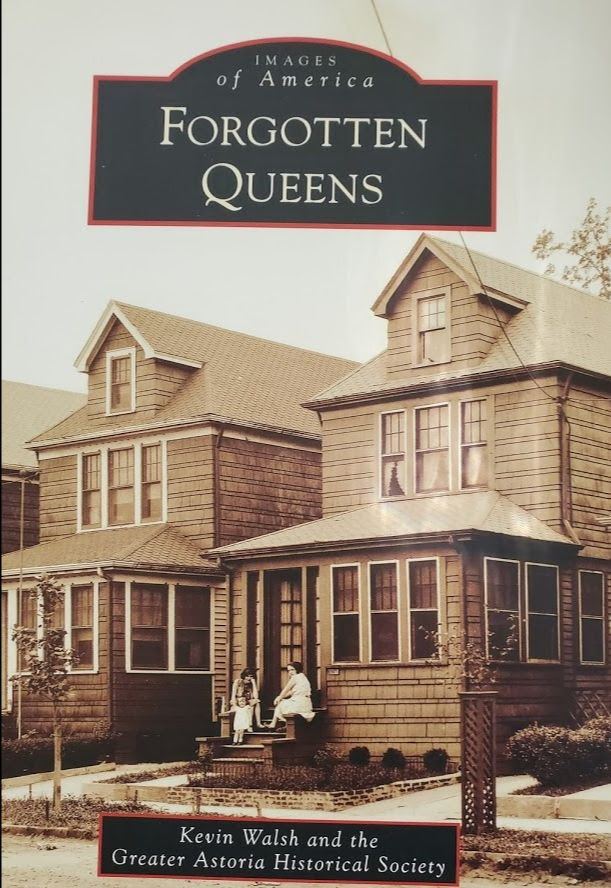

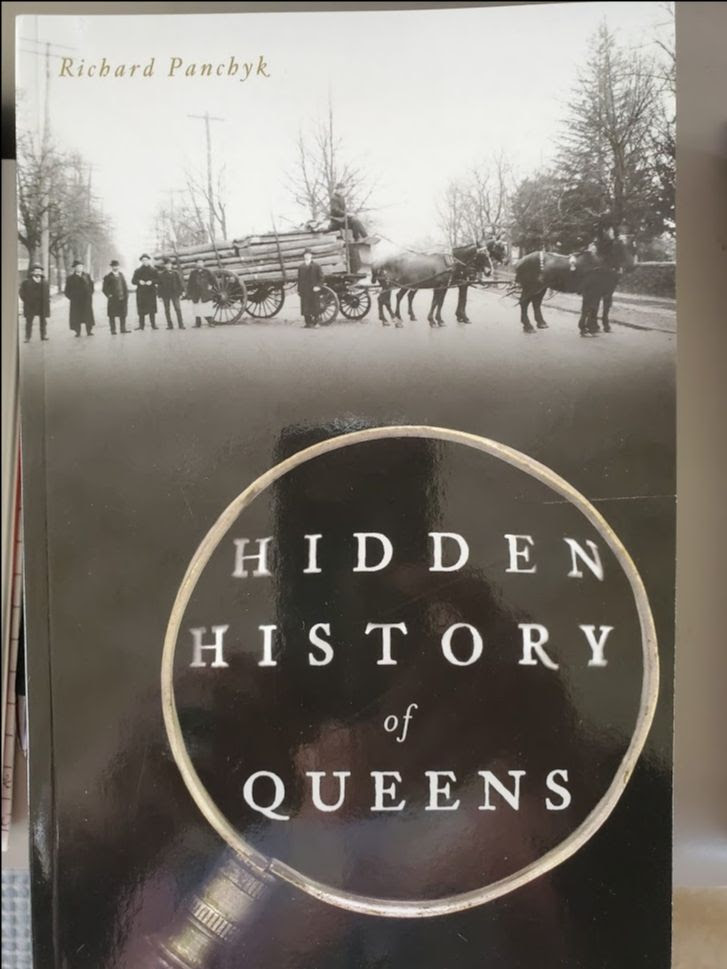
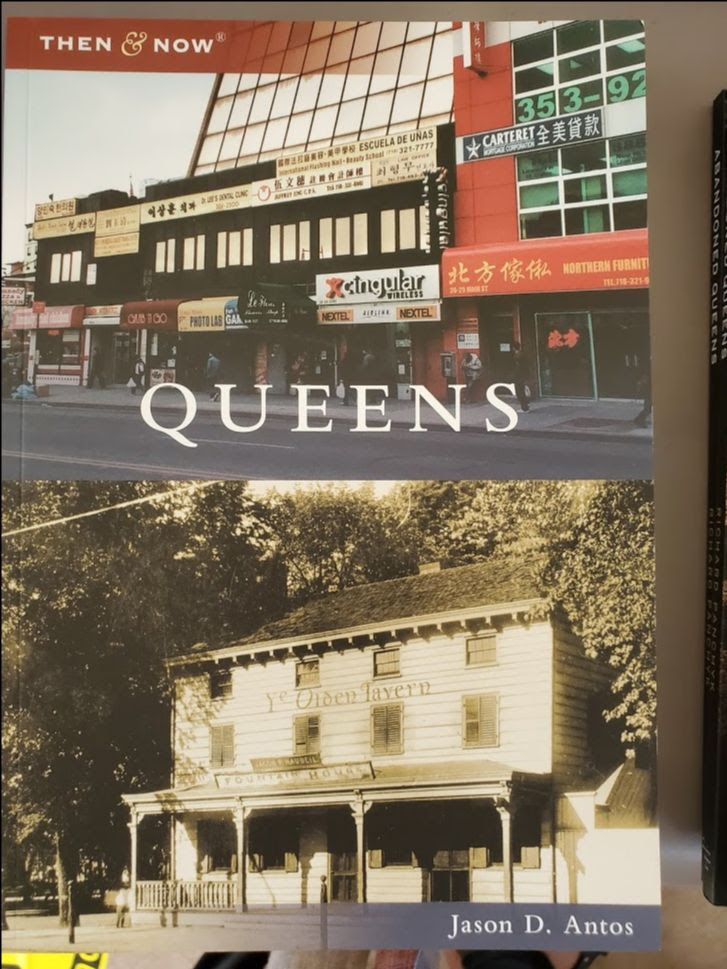
Leave a comment